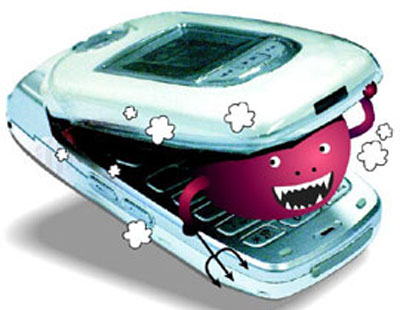Real damage of virus transmitted from computer to mobile phone
The mystery still covers information about the emergence of a virus that can jump from PC to mobile devices, as many security companies claim to be unable to confirm the authenticity of this information.
 Source: PCworld
Source: PCworldEarlier, the Mobile Antivirus Researchers Association (MARA) announced that they received the above "Crossover" virus code from an anonymous address.Microsoft - one of the software companies affected by the virus, said it was conducting an investigation but has so far not received any complaints from consumers.
Security businesses rushed to announce that they will update their products right away so they can detect and eliminate Crossovers, provided that MARA allows them to analyze the virus code.Although this process is very normal, when security companies send virus samples to each other to update the software, MARA has refused to publicize Crossover.
According to Sophos, at this point, both the antivirus community has only one word from MARA to verify the existence of the Crossover virus.Therefore, their common reaction is . wait."We want to see the virus pattern, analyze it and then conclude if it is likely to threaten users. It is disappointing that they (MARA) do not share the virus pattern."
For its part, MARA claims that Crossover is the first virus to be programmed to infect Microsoft Windows computers, then jump to mobile devices with Windows CE or other Mobile software.The infected PDA or smartphone will erase the data file.
Error in theory?
So far, the Crossover is still purely a paper hazard, proving that a vulnerability exists and that it can be exploited.The virus code has not been made public yet, but if it leaks out, cunning hackers will immediately reform and modify it to create a new virus.
The mechanism of the Crossover virus is to copy itself inside the personal computer's registry folder.After that, it will patiently wait until a certain mobile device connects and synchronizes data with the computer through Microsoft's ActiveSync program.After that, the virus will wipe the files saved in the device's My Documents folder.
Mikko Hypponen, F-Secure's research director, said his company could update the software to detect the virus only hours after the sample was available, but until now, "F-Secure hasn't seen its face yet." ".
Sophos contacted MARA by email for a sample, but MARA responded with an email with all the legal conditions below and Sophos did not accept it.
MARA, founded in 1995, describes itself as a "business organization" created to prevent the spread of malicious code.Members of MARA do not exchange viruses except for research purposes and are not involved in cybercrime.
If authenticated, the Crossover will mark the birth of a truly dangerous generation of mobile viruses.But so far, no one, other than MARA, dare to guarantee the first clause of the above clause.
Thien Y
 94% of Vietnamese computers are infected with Viruses!
94% of Vietnamese computers are infected with Viruses! Virus attacks Microsoft's latest IM software
Virus attacks Microsoft's latest IM software 10 techniques to protect your computer from spyware
10 techniques to protect your computer from spyware Virus 2005: Small scale, high impact
Virus 2005: Small scale, high impact Panda Software's Top 10 Most Dangerous Malware 2005
Panda Software's Top 10 Most Dangerous Malware 2005 Serious warning about Windows WMF vulnerability
Serious warning about Windows WMF vulnerability